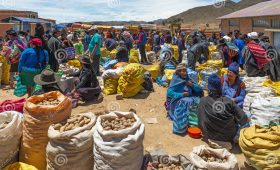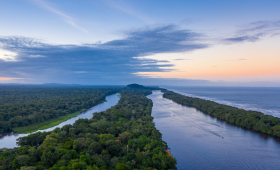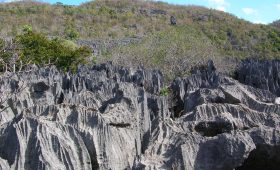Discover the Alofaaga Blowholes in Samoa
Experience the awe-inspiring power of nature at the Alofaaga Blowholes, a breathtaking natural phenomenon located on the island of Savai’i in Samoa. This guide provides essential information to help you plan your visit to this remarkable site, ensuring a memorable and safe experience.
What Makes the Alofaaga Blowholes Unique?
The Alofaaga Blowholes, also known as the Taga Blowholes, are a stunning display of nature’s force. Formed by ocean waves crashing into a series of lava tubes, these blowholes create dramatic geysers that can shoot water up to 30 meters (about 98 feet) into the air. This natural spectacle is both exhilarating and captivating, offering a vivid reminder of the ocean’s power.
Beyond their visual appeal, the blowholes hold cultural significance for the Samoan people. They are intertwined with local mythology, believed to be the result of ancestral prayers that have brought protection and prosperity to the area.
When to Visit the Alofaaga Blowholes
To witness the blowholes at their most impressive, plan your visit during high tide, typically in the morning or early afternoon. Checking the local tide schedule in advance will help ensure you catch the blowholes at their peak. The dry season, from May to October, is generally the best time to visit, offering more pleasant weather with less rainfall and lower humidity. However, even during the wet season, the blowholes remain a captivating sight.
Getting to the Alofaaga Blowholes
The blowholes are located near the village of Taga on Savai’i, Samoa’s largest island. Here are some options for reaching this destination:
- By Air: Fly into Faleolo International Airport in Apia, the capital of Samoa. From there, take a domestic flight to Maota Airport on Savai’i. Once on the island, you can hire a taxi or rent a car to reach Taga village.
- By Ferry: For a scenic journey, take a ferry from Mulifanua Wharf on Upolu to Salelologa Wharf on Savai’i. From Salelologa, hire a taxi or rent a car to travel to Taga village.
- By Bus: For a more local experience, take a bus from Apia to Salelologa on Savai’i. From there, you can hire a taxi or rent a car to reach the blowholes.
Local Transportation and Accommodation
Once in Taga village, you have several options for transportation and lodging:
- Taxis: Taxis are available for hire and can take you to the blowholes and other nearby attractions. Be sure to agree on the fare before starting your journey.
- Rental Cars: Renting a car provides flexibility to explore the area at your own pace. Rental services are available in Taga village.
- Accommodation: Taga village offers a variety of accommodations, from budget guesthouses to more upscale resorts. Booking in advance is recommended, especially during peak tourist seasons.
Visitor Tips and Safety
While the Alofaaga Blowholes are a must-see attraction, it’s important to prioritize safety during your visit. The area is unfenced and surrounded by wet, slippery rocks, which can be dangerous. Falling into one of the blowholes would be almost certainly fatal. Always maintain a safe distance from the blowholes, regardless of what others may do.
For an added thrill, local villagers often throw coconuts into the blowholes for a small fee (around ST10), where they are blasted into the air like cannonballs. This unique experience is both exciting and photogenic, but be sure to keep a safe distance.
Summary of Key Information
- The Alofaaga Blowholes are located on Savai’i, Samoa’s largest island.
- They are formed by ocean waves crashing into lava tubes, creating geysers up to 30 meters high.
- The blowholes hold cultural significance in Samoan mythology.
- Visit during high tide for the best experience, ideally in the dry season from May to October.
- Access the blowholes via air, ferry, or bus, with local transportation options available in Taga village.
- Accommodations range from budget to luxury, with advance booking recommended.
With this information, you’re ready to plan your visit to the Alofaaga Blowholes and experience one of Samoa’s most remarkable natural wonders. Safe travels!




